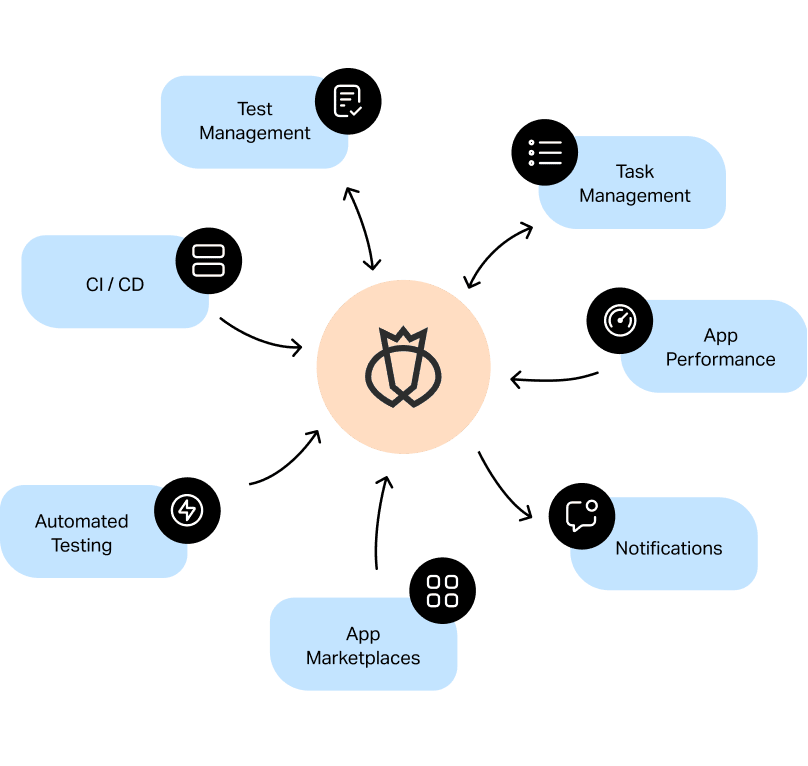Checking out the Future of Automation Testing in Software Program Growth
Checking out the Future of Automation Testing in Software Program Growth
Blog Article
From Manual to Automated Screening: A Comprehensive Guide to Transitioning Smoothly and Efficiently
In the realm of software program testing, the shift from manual to automated procedures has actually become an increasingly important transition for companies looking for to boost effectiveness and accuracy in their screening methods. The journey from guidebook to automated screening is not without its challenges, however when approached tactically and with a clear plan in mind, the benefits can be significant.
Benefits of Automated Examining
Automated screening supplies various benefits, boosting performance and accuracy in software application growth procedures. Automated tests can be run at the same time on several tools and running systems, considerably speeding up the screening stage compared to hand-operated testing.
Additionally, automated screening makes certain a greater degree of precision in discovering issues. Since automated tests follow predefined scripts, human error is decreased, leading to more reputable examination results. Consistency in testing is likewise improved, as automated examinations implement the same steps exactly each time they are run. This uniformity is critical in ensuring that all performances of the software are completely evaluated, lowering the probability of undiscovered insects sliding through to production.
Selecting the Right Tools

To start with, assess your requirements and objectives. Understand the extent of your task, the modern technologies included, and the ability of your team. This analysis will aid you determine the capacities and attributes you call for in your screening tools.
Secondly, consider the compatibility of the devices with your existing procedures and systems. Seamless combination with your current software advancement lifecycle is vital to guarantee a smooth shift to automation.
Furthermore, examine the scalability and versatility of the devices. As your testing needs develop, the devices ought to have the ability to adjust and fit modifications effectively.
Last but not least, aspect in the support and area around the tools. When implementing automated screening, durable support and an energetic user area can offer valuable sources and assistance. By carefully taking into consideration these elements, you can select the right devices that align with your demands and set the phase for an effective shift to automated testing.
Creating Effective Examination Scripts

When crafting test manuscripts, it is vital to consider the details demands of the software program being checked and ensure that the manuscripts address all important performances. Clear and detailed calling conventions for examination scripts and examination cases can boost readability and maintainability. Furthermore, incorporating mistake handling mechanisms within the examination scripts can help in recognizing and dealing with concerns quickly.
In addition, organizing examination manuscripts into modular elements can improve reusability and scalability, lowering redundancy and improving performance in test script upkeep. Normal reviews and updates to check manuscripts are essential to maintain pace with advancing visit this site software application needs and performances. By following these concepts, testers can create durable and reliable test manuscripts that add significantly to the success of automated testing processes.
Integrating Automation Into Workflows
By flawlessly integrating automated screening tools like Selenium or Appium right into the software application growth lifecycle, teams can attain faster comments on code adjustments, leading to quicker insect discovery and resolution. This combination allows for constant testing throughout the growth process, making sure that any kind of problems are recognized early on, resulting in higher software program quality. Appropriate integration of automation tools calls for collaboration between growth, testing, and operations groups to develop a unified process that maximizes effectiveness and efficiency in supplying premium software program products.
Making Sure a Smooth Transition
Effectively transitioning to automated screening involves thorough planning and cautious execution to make the most of and her explanation decrease disruptions efficiency in the software application growth procedure - automation testing. To guarantee a smooth shift, it is important to start by carrying out a thorough assessment of the current testing procedures and recognizing areas where automation can bring the most substantial advantages. Involving with all stakeholders early on at the same time, consisting of programmers, testers, and project managers, is important for amassing assistance and buy-in for the automation campaign
Interaction is key during this change stage. Clear communication of the goals, benefits, and assumptions of automated screening helps to manage any resistance or concerns that may emerge. Additionally, providing adequate training and resources for staff member to upskill in automation tools and strategies is vital for ensuring a successful transition.

Verdict
In final thought, transitioning from handbook to automated screening supplies various benefits, consisting of raised effectiveness and integrity. By selecting the appropriate tools, composing reliable test manuscripts, and integrating automation read this post here perfectly right into workflows, companies can ensure a effective and smooth change. It is necessary to welcome automation as a valuable property in software testing procedures to enhance general top quality and productivity.
In the realm of software program screening, the shift from handbook to automated processes has come to be a significantly essential change for companies seeking to enhance performance and precision in their screening methods. Automated examinations can be run concurrently on several devices and running systems, drastically speeding up the screening stage compared to manual testing. Uniformity in testing is also improved, as automated examinations implement the very same actions exactly each time they are run.To make sure the successful implementation of picked screening tools, the creation of reliable examination scripts plays a critical duty in verifying the capability and efficiency of automated processes - automation testing. By adhering to these principles, testers can create durable and reliable examination scripts that add substantially to the success of automated screening processes
Report this page